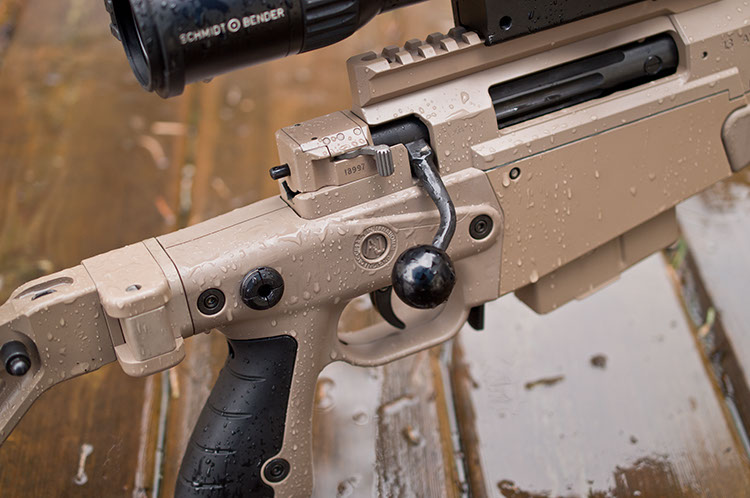
As Canadians pore through the hastily concocted OIC introduced by Justin Trudeau on the 1st of May, many have cited a variety of problems, ranging from the supposition of a prohibition on a coffee company and a forum website, the reality is that many of those AR-15 variants appearing with titles like the "Black Rifle Company" and "ARFCOM" actually refer to real receiver sets produced under license to support the brands they are labelled as within the FRT; resulting in their somewhat misleading appearance in the OIC. Hence, these are in fact, real AR-15s.
However, those are far from the only problems with the OIC. Section 95 of the OIC clearly states that every firearm with a bore diameter of 20mm or greater is prohibited. In a legal opinion posited by firearms law expert Ed Burlew, it was discovered that 12- and 10-gauge shotguns that utilize choke tubes measure in excess of 20mm at the muzzle with the choke tubes removed. What's followed has been a flurry of panic among gun owners, some measuring their own bores to confirm that indeed the barrel measures between 20.4 and 20.8mm across the muzzle, others claiming that the bore diameter measurement should be taken elsewhere. Even among legal experts, the OIC's unclear wording and lack of defined parameters for bore measurement has confounded. Alberta-based firearms lawyer Ian Runkle communicated that it's not beyond the realm of imagination that a court may accept the notion that a shotgun bore should be measured before the choke tube, but still noted that such a defence would require a test case go before the court; a long, expensive, and stressful process. As a result, in a later comment he quipped; "Taking your 12 gauge out to hunt some ducks just got really legally perilous." Similarly, firearms lawyer Solomon Friedman, now preparing a legal attack on the OIC on behalf of the NFA, agreed with Mr. Burlew's opinion that the affected firearms are indeed prohibited.
But the problems don't stop there. Section 96 prohibits "any firearm capable of discharging a projectile with a muzzle energy greater than 10,000 joules — other than one referred to in item 12, 13, 14, 20, 22 or 30 of this Part or one designed exclusively for the purpose of neutralizing explosive devices." This section, clearly designed to remove large-calibre firearms from the market, is squarely aimed at .50 BMG rifles. However, by setting the threshold at 10,000 joules, it also captures all those rifles in very big-game calibres, including .460 Weatherby Mag, and a handful of similarly large calibres typically found in extremely expensive African hunting rifles, including double guns and heirloom pieces worth well into the six-figure range. But that's not all. The aforementioned introduction ends with "including the;" and goes on to list primarily .50 BMG rifles. But not expressly .50 BMG or similarly large-bore rifles. For example, prohibited by name as being capable of producing more than 10,000 joules of muzzle energy is the:
(D) Accuracy International AX. This is a family of rifles we've tested, and is both a single calibre model (the AX308) and a multi-cal family of rifles incorporating .308, .300 WM and .338 LM barrels. None of the AI AX family of rifles (excepting the AX50, which is listed on the OIC separately) can produce 10,000 joules of muzzle energy.
(M) American Tactical Imports Omni Hybrid. This is another rifle we've tested; it's a polymer AR-15 receiver set sized around the small-bore .223 calibre. Even if built around the .50 Beowulf round, an ill-advised decision given it's polymer nature, this small-format AR-15 tops out at roughly 1/3 the 10,000 joule threshold.
(z.033) DPMS A-15. This is another run-of-the-mill AR-15 and, like the Omni Hybrid, incapable of even reaching 4,000 joules of muzzle energy.
(z.041 & z.042) Essential Arms J15 and J15F. Two more basic, small-format AR-15s built around the .223 round and producing less than 2,000 joules of energy.
(z.086) Phase 5 Tactical P5T155. This is another AR-15, but specifically one tailored around competition use, with all the go-fast goodies you want in a 3-gun match rifle. It's still not producing more than 2,000 joules of energy though.
(z.1) RPA Quadlock. In a situation similar to the AX family of rifles, the RPA Quadlock was once available in a super-sized Quadlock 50 model (sold under the market name RPA Rangemaster 50 that is listed on the OIC) that exceeds the 10,000 joule threshold, but the Quadlock family is now limited to bare short actions with either .308 or magnum boltfaces; it does not come with a barrel. Even though the old Quadlock 50 is built using an obviously larger receiver, with a significantly different bolt, and shares no shared components beyond the trigger, it shares the FRT entry of its smaller still-produced siblings and thus makes them prohibited.
(z.129) Tactical Machining TM-SS. This one stumped us, but after reaching out to Tactical Machining some light was shed; "We did make a single shot lower with no magazine called the TM-SS, but again it was a part not a gun. I don't even have a picture of one so few were made." Again, like the RPA Quadlock you can buy today, it's not even a complete gun.
And those are merely technical issues we spotted. Given the lazy wording of both the 20mm bore diameter restriction and the joule limit, undoubtedly other issues will crop up, but suffice to say these technical and obvious issues speak to the hasty and poorly-planned nature of this particular OIC.
Just in case you wanted another reason to hate it.